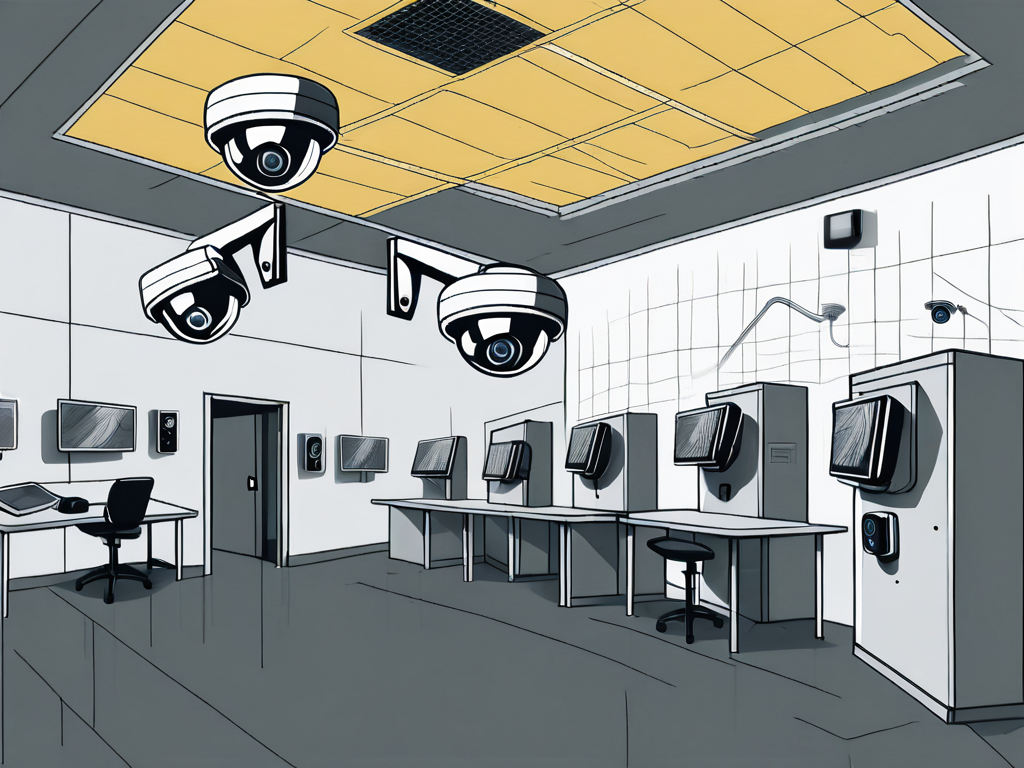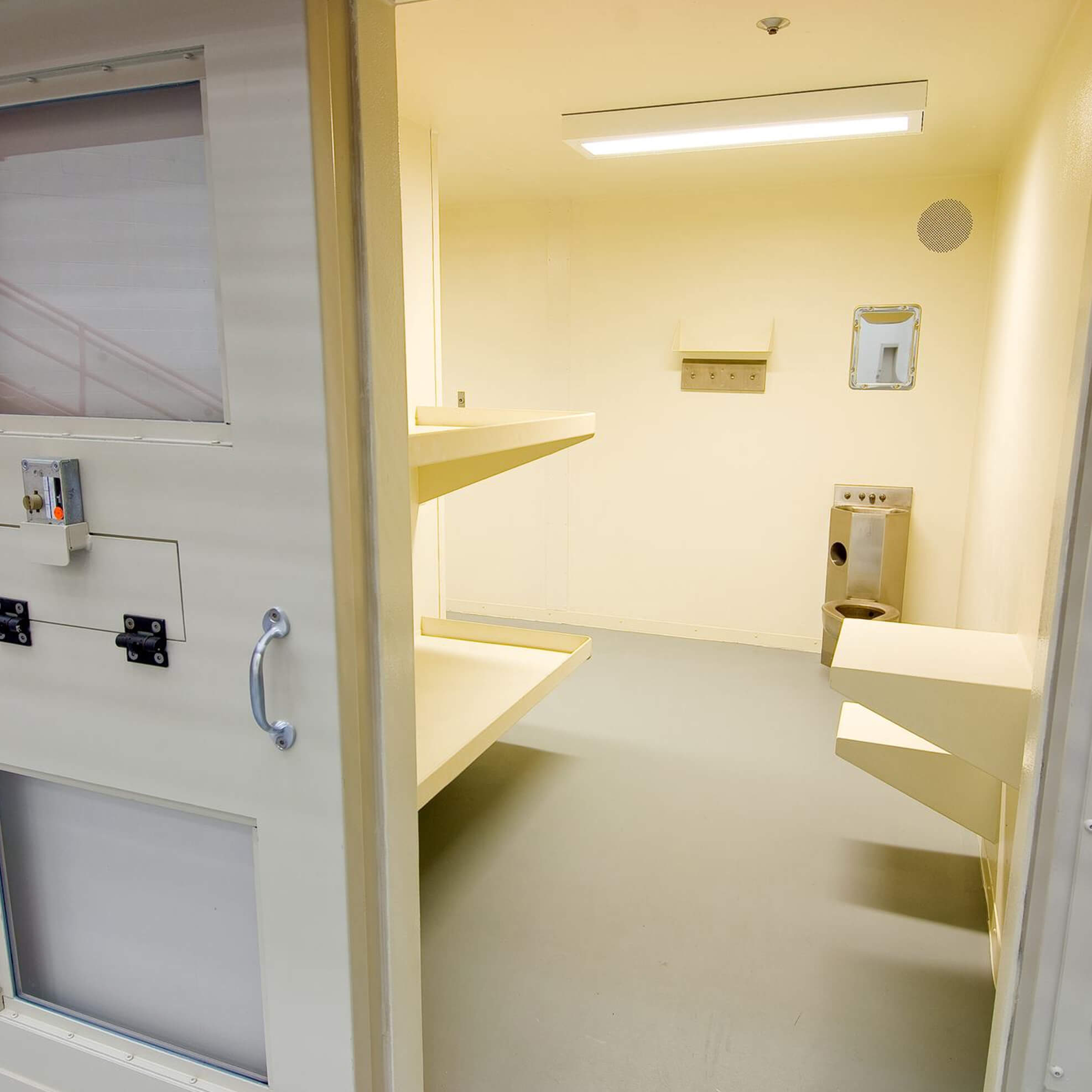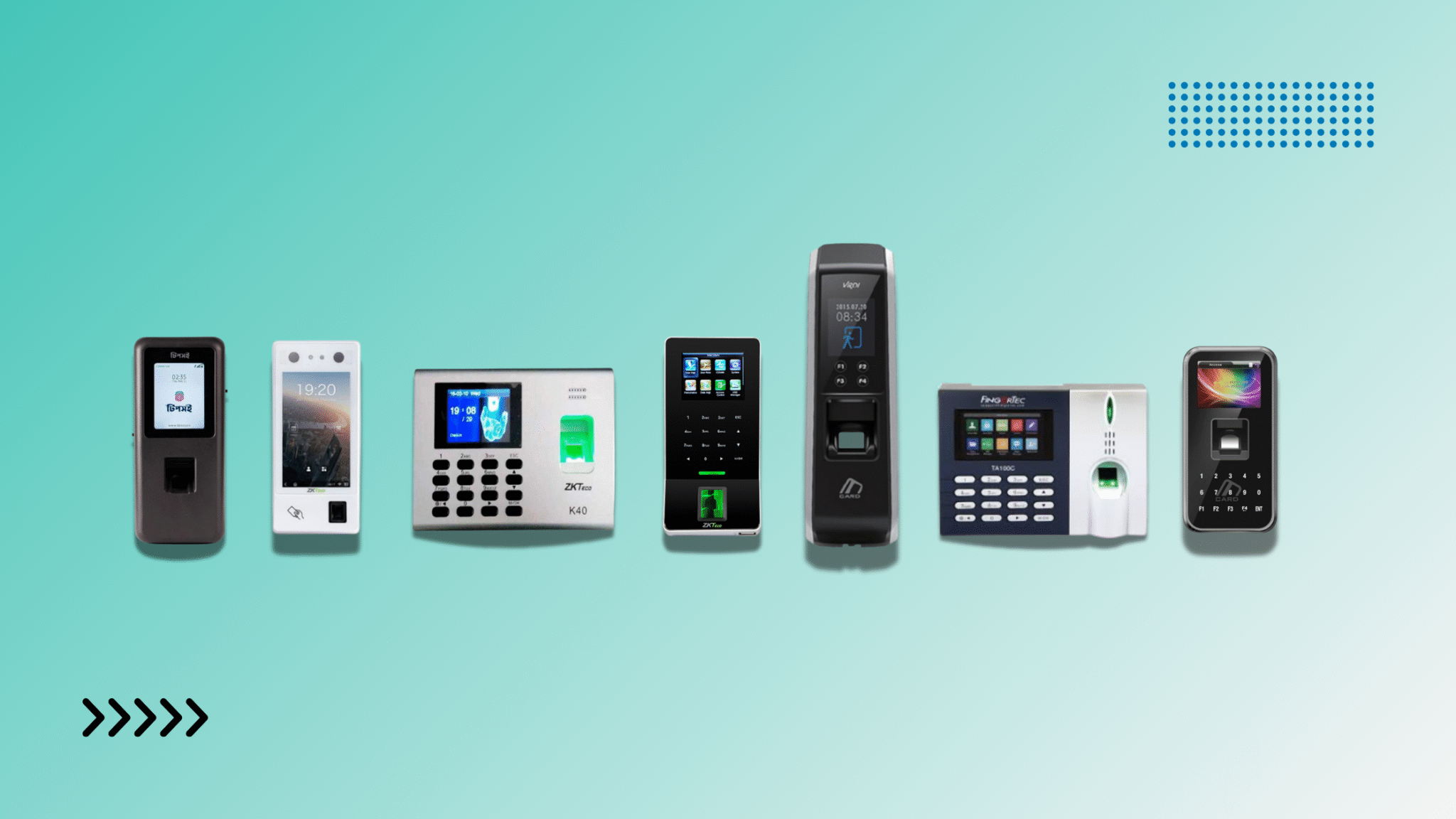Biometric security in detention centers is becoming more common. It uses unique physical traits for identification.
This technology enhances safety and helps manage inmates effectively. Detention centers face many challenges, such as security threats and escape attempts. Traditional methods, like ID cards, can be easily forged. Biometric systems, like fingerprint and facial recognition, offer more reliable solutions.
They help staff quickly identify individuals, ensuring only authorized personnel access sensitive areas. This approach not only protects inmates but also guards and the public. As technology advances, the role of biometric security in detention centers will likely grow. Understanding its importance can shed light on future trends in prison management and safety.
Introduction To Biometric Security In Detention Centers
Biometric security plays a vital role in detention centers. It uses unique physical traits for identification. This technology enhances safety and efficiency in managing inmates.
The Need For Advanced Security
Detention centers face many security challenges. Increased inmate populations raise risks. Traditional security methods often fall short.
- High rates of violence among inmates.
- Escapes and unauthorized access.
- Identification errors can lead to serious issues.
Advanced security is essential. Biometric systems can reduce these risks. They offer accurate and reliable identification.
What Biometrics Technology Offers
Biometric technology provides several key features:
- Fingerprint Scanning: Uses unique patterns for accurate identification.
- Facial Recognition: Identifies individuals based on facial features.
- Iris Scanning: Analyzes unique iris patterns for high security.
- Voice Recognition: Identifies individuals through vocal characteristics.
These features improve security measures. They ensure that only authorized personnel access sensitive areas.
| Biometric Method | Advantages | Limitations |
|---|---|---|
| Fingerprint Scanning | Fast and cost-effective | Can be affected by dirt or damage |
| Facial Recognition | Non-intrusive and quick | May struggle in poor lighting |
| Iris Scanning | Very accurate | Higher cost and complexity |
| Voice Recognition | Easy to use | Background noise can interfere |
Biometric security enhances the safety of detention centers. It provides reliable identification, helping to manage risks effectively.

Credit: pavion.com
Types Of Biometric Technologies Used
Biometric security systems enhance safety in detention centers. They use unique physical traits to identify individuals. Several technologies help in this process. Each has its strengths and weaknesses. Let’s explore the main types of biometric technologies used.
Fingerprint Recognition Systems
Fingerprint recognition is one of the oldest biometric methods. It captures the unique patterns on a person’s fingertips. Sensors read these patterns and compare them with stored data. This method is quick and accurate. It works well in various conditions, such as low light.
Fingerprint systems are often user-friendly. They require minimal training for staff. Many facilities use portable devices for flexibility. This allows for easy implementation across different areas.
Facial Recognition Advancements
Facial recognition technology has advanced significantly. It analyzes facial features, such as distance between eyes and nose shape. Cameras capture images in real-time. The system compares these images to databases for quick identification.
Facial recognition is non-intrusive. It allows for remote monitoring without physical contact. This method can operate in crowded environments. It helps maintain security without disrupting daily activities.
Iris Scanning Effectiveness
Iris scanning uses the unique patterns in the colored part of the eye. This method is highly secure and difficult to fake. Scanners capture images of the iris quickly. The system compares these images with stored data for identification.
Iris scanning works well in high-security environments. It offers high accuracy rates and low false positives. This technology is gaining popularity in detention centers.
Benefits Of Biometric Security For Detention Centers
Biometric security offers several advantages for detention centers. It helps ensure safety and efficiency. This technology uses unique physical traits for identification. Fingerprints, facial recognition, and iris scans are common methods. Here are some key benefits.
Improved Inmate Management
Biometric systems streamline inmate management. Staff can quickly verify identities. This speeds up processing during intake and release. Accurate tracking of inmates enhances safety. Real-time data allows for better supervision. Staff can respond faster to incidents. Inmate movement becomes easier to monitor. Overall, it creates a safer environment.
Enhanced Facility Access Control
Biometric security improves access control in detention centers. Only authorized personnel can enter sensitive areas. This reduces the risk of unauthorized access. It protects staff and inmates alike. Biometric systems maintain records of who enters and exits. These records are useful for audits and investigations. Enhanced security measures build trust among staff and inmates.
Reduction In Identity Fraud
Biometric technology helps reduce identity fraud. Each inmate’s unique traits prevent impersonation. This ensures that only the right person is in custody. Accurate identification prevents mix-ups and errors. It safeguards the integrity of the detention system. Trust in the system increases with reliable identification.
Challenges And Considerations
Biometric security in detention centers faces several challenges. These issues affect how well the system works. Understanding these challenges helps in planning and implementation.
Privacy Concerns
Privacy is a major issue with biometric systems. Collecting personal data can feel intrusive. Individuals may worry about how their information is used.
Here are some key points regarding privacy concerns:
- Data storage risks. Data can be stolen or misused.
- Consent issues. People may not fully understand what they agree to.
- Monitoring. Constant surveillance can feel oppressive.
Ensuring transparency in data handling is crucial. Clear policies can help ease concerns.
Integration With Existing Systems
Integrating biometric systems with current technology can be complex. Many detention centers already use various systems. New technology must work with what is already there.
Challenges include:
- Compatibility. New systems must communicate with older ones.
- Training staff. Employees need to learn how to use new tools.
- Data migration. Moving existing data to a new system can be tricky.
Successful integration requires careful planning and testing.
Cost Implications
Implementing biometric security has financial impacts. Initial costs may be high. Ongoing maintenance also adds to expenses.
Consider the following costs:
| Cost Type | Description |
|---|---|
| Initial Setup | Purchase of biometric devices and software. |
| Training | Costs to train staff on new systems. |
| Maintenance | Regular upkeep and updates for the system. |
Budgeting for these costs is essential. Careful financial planning helps in long-term success.
Case Studies: Biometrics In Action
Biometric security is changing how detention centers operate. Real-world examples show its benefits. These case studies highlight successes and challenges. They provide insight into what works and what doesn’t.
Successful Implementations
One detention center adopted fingerprint scanners. This system reduced unauthorized access. Staff members felt safer knowing only approved individuals could enter.
Another facility used facial recognition. This technology quickly identified inmates during transport. Staff could focus on security rather than paperwork.
A third center implemented iris scans. This method improved tracking of inmates. It ensured accurate records and minimized errors.
Lessons Learned From Failures
Not all biometric systems succeed. One center tried voice recognition, but it failed. Background noise interfered with accuracy. Staff found it unreliable.
Another facility faced privacy concerns. Inmates protested against facial recognition. This led to legal challenges and delays in implementation.
Some centers lacked training for staff. Poor understanding of technology caused issues. Staff struggled to use systems effectively.

Credit: www.steelcell.com
Future Of Biometric Technology In Corrections
The future of biometric technology in corrections looks promising. This technology can change how detention centers operate. It enhances security and improves efficiency.
Biometric systems use unique physical traits. These traits include fingerprints, facial recognition, and iris scans. Such systems can help staff monitor inmates better. They can also reduce human error. This leads to a safer environment for everyone.
Emerging Technologies
Several new technologies are emerging in the biometric field. Artificial intelligence is one of them. AI can analyze biometric data quickly. This helps in identifying inmates or visitors accurately.
Mobile biometric devices are also gaining traction. They allow for on-the-go identification. Officers can scan fingerprints or faces instantly. This speeds up the identification process in the field.
Blockchain technology may also be useful. It can secure biometric data and ensure its integrity. This helps prevent tampering or misuse of sensitive information.
Predictions For Adoption And Usage
Experts predict an increase in biometric adoption in corrections. More facilities will invest in these technologies. This shift will enhance security measures significantly.
Training staff on new systems will be crucial. Proper training ensures the technology is used effectively. Facilities must also address privacy concerns. This will build trust among inmates and staff.
Overall, the future of biometric technology in corrections is bright. It promises to make detention centers safer and more efficient.
Ethical And Legal Implications
Detention center biometric security raises many ethical and legal questions. These issues affect inmates, staff, and society. Understanding these implications is crucial for all stakeholders.
Inmate Rights And Privacy
Inmates have rights that need protection. They deserve privacy, even in a detention center. Biometric data can feel intrusive. Fingerprints, facial recognition, and iris scans are sensitive information.
Using this data can violate privacy rights. It is important to ask if inmates consent to this data collection. Transparency is key. Inmates must know how their data is used and stored.
Regulatory Compliance
Detention centers must follow laws about biometric data. Regulations exist to protect personal information. Centers must ensure they comply with these laws.
Failure to comply can lead to serious consequences. Legal actions can arise from improper data handling. Regular audits and training for staff can help maintain compliance.
Staying informed about changing regulations is essential. Centers must adapt to new laws. Protecting inmate rights and ensuring legal compliance go hand in hand.

Credit: ktla.com
Frequently Asked Questions
What Is Biometric Security In Detention Centers?
Biometric security in detention centers refers to the use of technology that identifies individuals based on unique physical traits. These traits can include fingerprints, facial recognition, or iris scans. This system enhances security, ensuring that only authorized personnel can access sensitive areas.
It minimizes the risk of identity fraud.
How Does Biometric Technology Improve Safety?
Biometric technology enhances safety by providing accurate identification of individuals. This reduces the chances of unauthorized access and potential security breaches. By relying on unique biological traits, it is much harder for individuals to impersonate others. Thus, overall safety and security within detention centers are significantly improved.
What Are The Benefits Of Biometric Systems?
Biometric systems offer numerous benefits, including increased security and efficiency. They help streamline the identification process, reducing wait times. Additionally, biometric data is difficult to forge, which enhances trust in the system. This technology ultimately leads to a safer environment for both staff and inmates.
Are There Privacy Concerns With Biometrics?
Yes, there are privacy concerns regarding biometric data collection. Individuals may worry about how their information is stored and used. Ensuring secure storage and handling of biometric data is crucial. Transparency and compliance with privacy laws can help alleviate these concerns and build trust in the system.
Conclusion
Biometric security in detention centers enhances safety and efficiency. It provides quick access to important information. Fingerprints and facial recognition help identify individuals accurately. This technology reduces human error and speeds up processes. With better security, staff can focus more on their duties.
Implementing these systems is a step toward modernizing detention facilities. Stronger protection for everyone inside is essential. Investing in biometric security is a wise choice for future safety. The benefits are clear. A secure environment leads to better outcomes for all.








